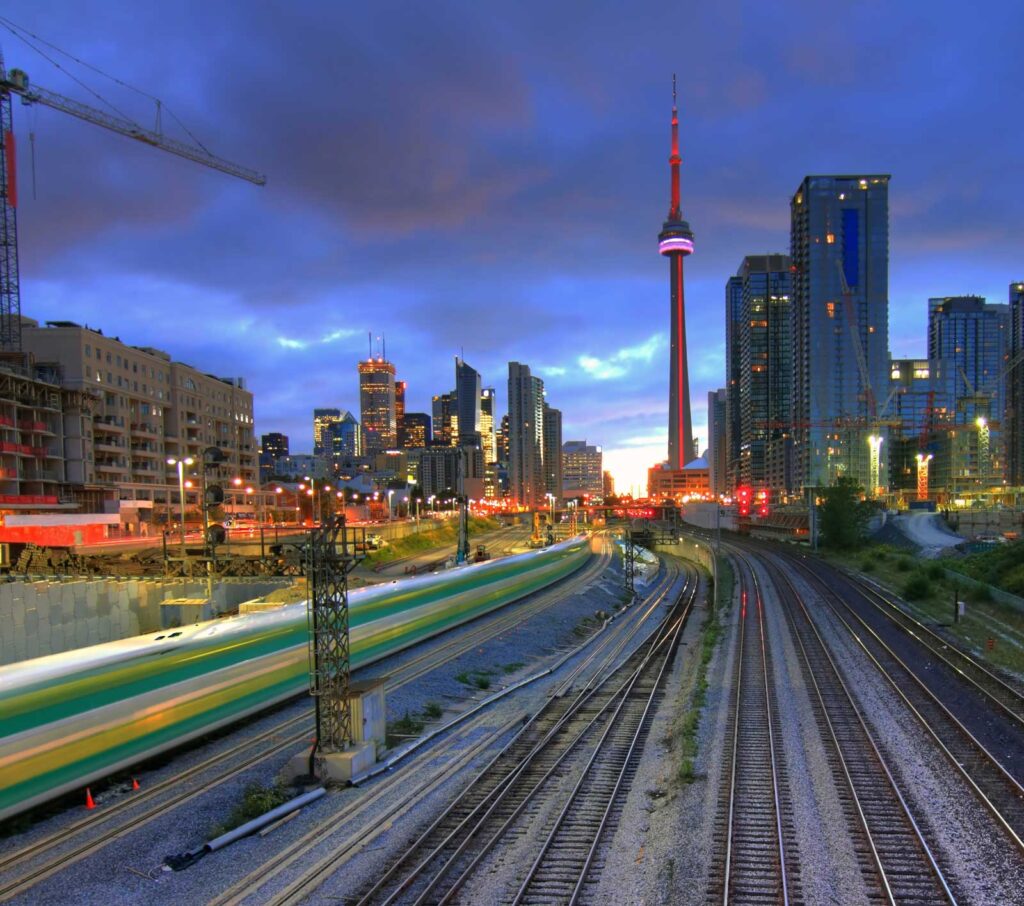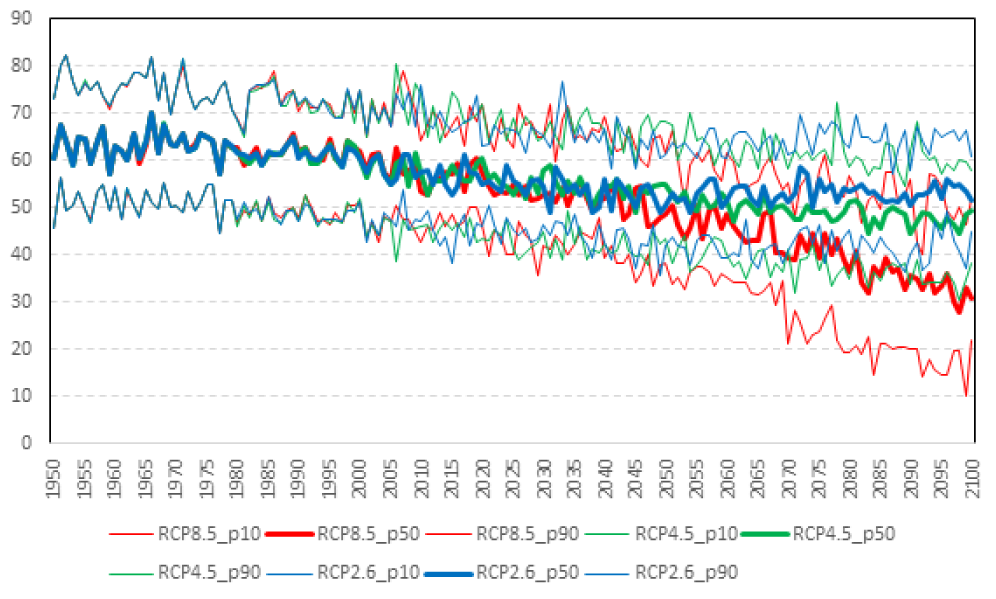As shown on this graph of the hottest day, the hottest day in the past was in the low 30℃s (on average). The projections for the decades surrounding the 2020s indicate that the average hottest day has likely already increased to the mid 30℃s and that in the decades around the 2050s (in medium and higher emissions scenarios) it could increase to about 40℃. This has implications for the steel tracks.
When continuous welded rail tracks are installed in a corridor, they first have to be stressed according to a regionally-appropriate rail laying temperature. Across Canada, this temperature has traditionally been 32.2°C. Sustained air temperatures above 32°C can cause what are called “sun kinks” in steel rails. This poses a safety issue if trains pass over them too quickly. The climate-induced increase in the average summertime daily temperature has prompted Metrolinx to adopt a higher temperature for rail laying, of 37.7°C for all new track.
Slow-go orders are imposed when temperatures exceed 30°C. Train speeds are cut by 24 km/h, which can add about 10 minutes to the average trip. As these hot temperatures are occurring more often, there will be an increased number of “slow-go orders” and corresponding travel delays.


